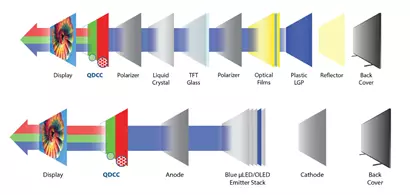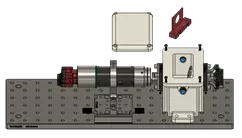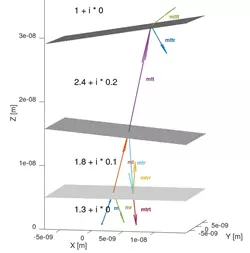New Tools for Characterizing Quantum-Dot Displays
Quantum dots are a promising technology for use in LCD screens. With the help of quantum dots, the background illumination can be improved, resulting in more brilliant colors and at the same time simplifying the internal structure. In this project, we are extending existing simulation software and developing new measurement equipment to support research and development in this area.
Contributors: K. P. Pernstich, M. Frioud, A. Bachmann, C. Kirsch, M. Regnat, B. Ruhstaller
Partner(s): Fluxim AG
Funding: Innosuisse
Duration: 2021–2024

In modern LCD screens, the backlight no longer consists of a light source that emits white light, e.g. a white LED, but of a combination of a blue LED and a quantum dot (QD) film. The QD film absorbs the blue light and emits it in one of the other primary colors, i.e. red or green, resulting in a more brilliant color reproduction.
In addition to LCD screens, organic light-emitting diodes (OLEDs) have also established themselves as a market-ready technology. Among certain other advantages, OLED screens offer better image quality than LCDs. Recent developments now seek to leverage the advantages of both technologies and use QD films together with blue OLEDs as a new technology. Figure 1 illustrates this new trend in the display industry.

To benefit from this new technology, Korean and Swiss partner organizations have joined forces in this international Innosuisse project. The Swiss partner company Fluxim AG is expanding its products in the areas of measuring instruments and simulation software. The Korean partner company is developing a process to encapsulate the quantum dots and thus make them more durable. The academic partners in Korea are working on the fabrication and optimization of blue OLEDs and on an inkjet printing process to selectively deposit the QD films over individual OLEDs.
At the ICP, we are involved in the further development of a model to calculate the propagation of light as a function of its polarization direction and also in the development of a measuring device for the detailed investigation of QD films and QD-OLEDs. Figure 2 shows the CAD design of this instrument, which allows to measure the edge-degradation of QD films at various temperatures and different environmental conditions such as an inert nitrogen atmosphere or dry/humid air.

Figure 3 shows an example scenario of the prototype ray-tracing software.